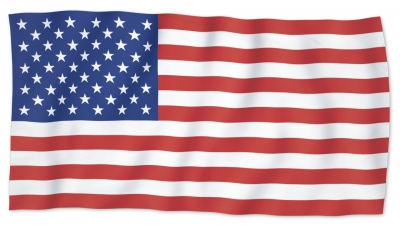
In the early days of the American War of Independence each state adopted a flag of its own. South Carolina had a flag of red and blue stripes adorned with rattlesnakes. That of Massachusetts bore a pine tree. Even the colours carried by different regiments differed accordingly to the taste of their commanders. This was confusing, especially at sea, where one ship might well end up firing on her own ally!
The Rhodes Island flag was the first to contain any stars. There were 13 stars representing the 13 colonies which later were to become the first members of the United States.
In 1776 Washington’s new continental army displayed its flag. This time there were no stars. Still in the top left-hand corner was the British Grand Union flag, with its crosses of St George and St Andrew-a sign, one supposes, that independence was not yet the American’s intention. But around the British emblem appeared the stripes: six white horizontal stripes and seven red ones, again giving the total of 13.
It was not until 1777, almost a year after the adoption of the Declaration of Independence, that Congress adopted a design for the national flag. This consisted of 13 stars (in place of the Grand Union flag) and 13 stripes, alternately red and white.
Every time a new state was accepted in the Union a new star and a new stripe would be added to the flag. By 1795 the flag was getting a little cramped; there was no room for any more stripes. So Congress decided that the flag should contain only 13 stripes representing the original states, and that a star for each new state should be added on the July 4 following its admission to the Union.
In 1959 Alaska became the 49th state and in the same year Hawaii became the 50th and most recent.
Picture Credit : Google




